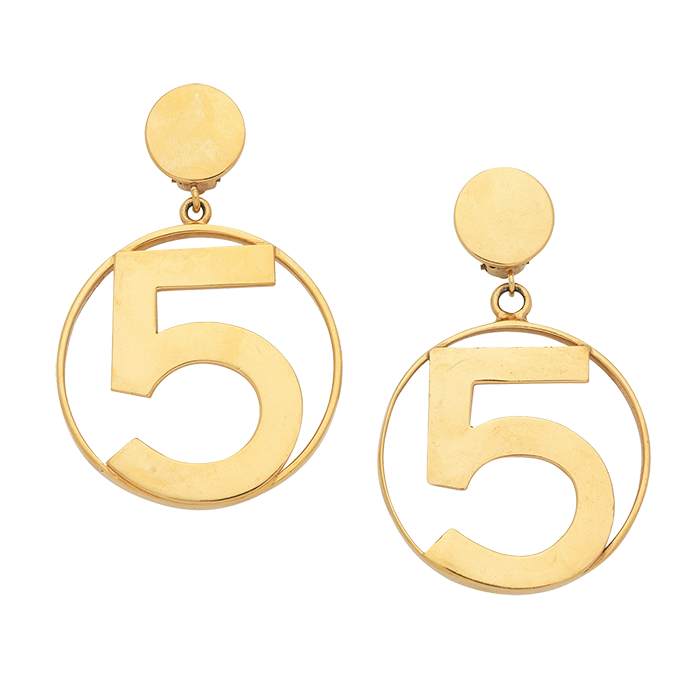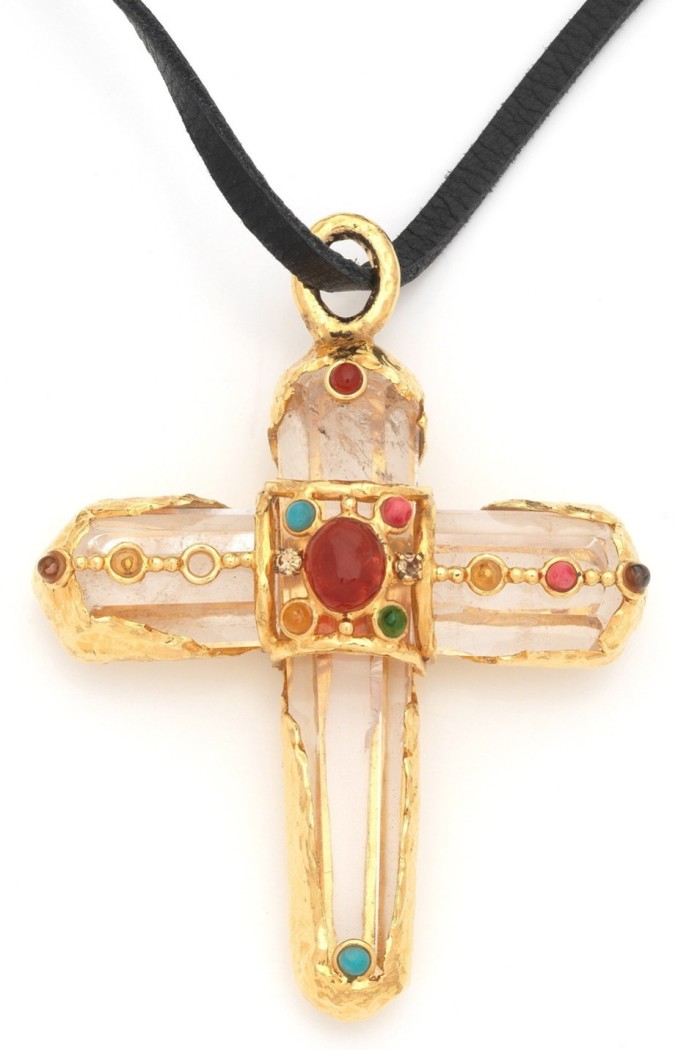Coco goes pop: London show puts Chanel jewellery in the spotlight

Roula Khalaf, Editor of the FT, selects her favourite stories in this weekly newsletter.
A rare surviving piece from Gabrielle “Coco” Chanel’s only high jewellery collection will go on display in London this month in an exhibition dedicated to the French fashion designer. The Comète brooch is one of 95 jewellery pieces in Gabrielle Chanel. Fashion Manifesto. Also featuring clothes, cosmetics and perfumes, the V&A show will chart the evolution of her design approach from the opening of her first boutique in 1910 to her final collection in 1971.
The majority of the jewels are costume jewellery, a style that Chanel helped to popularise. Experts predict the exhibition, which runs from September 16 to February 25 next year, will boost the already strong market for vintage pieces by the house.
Chanel started designing jewellery in about 1924 and it became an important part of the “Chanel look”, says Connie Karol Burks, project curator at the V&A. “What’s interesting about her approach to jewellery is, on the surface, it almost seems like the antithesis of her approach to fashion. With clothing, she’s known for a very pared-back style, honing an elegant simplicity, whereas her approach to costume jewellery was a sense of abundance. They’re quite often oversized pieces; she always advocated wearing multiple pieces.”
Up close, however, the clothes are detailed, says Karol Burks, and it is the same with many of the jewellery pieces. While they make an impact from afar with colour and jewels, only the wearer might see filigree work on a brooch.
Chanel appreciated costume jewellery as a “new style of adornment, rather than something lesser than fine jewellery”, she says. The designer showed pieces with her couture collections and worked in partnership with other designers and artisans.
The exhibition features 1930s botanical-inspired brooches and necklaces from Chanel’s collaboration with Maison Gripoix, made using the pâte de verre poured-glass technique for which the French atelier was known. They include a camellia design, a signature Chanel motif.
Chanel also drew from history. Her 1960s silver gilt and pâte de verre cuff made by French jeweller Robert Goossens was inspired by a Syrian bracelet (late second to early third century AD) she saw at the Louvre in Paris, says Karol Burks. Two 1960s cuffs made by Goossens recall Duke Fulco di Verdura’s celebrated 1930s Byzantine-inspired cuffs with a Maltese cross motif that Chanel wore.
The platinum and diamond Comète brooch is one of two known surviving pieces from the 1932 Bijoux de Diamants collection, featuring motifs including celestial bodies, bows and feathers, that the London Diamond Corporation invited Chanel to design to help revive the diamond trade following the 1929 US stock market crash and subsequent economic slump. The exhibition includes a film made to promote the pieces, which Chanel put on public display in her Paris home in Rue du Faubourg Saint-Honoré in aid of charity.

“[The brooch] is one of those key pieces that has continued to inform design at the house of Chanel,” says Karol Burks. The brand launched its fine jewellery offering in 1993 by recreating pieces from Bijoux de Diamants, while the collection also inspired last year’s 1932 high jewellery designs.
Chanel returned to motifs in her jewellery, and the house has returned to her designs since her death. “Everything’s always influenced by her, which is why the brand has such longevity and a clear visual language,” says Meg Randell, head of designer handbags and fashion for the UK and Europe at Bonhams.
The auction house is holding an online sale, “The Art of Luxury: Chanel”, on September 11-21 to coincide with the exhibition opening. A pair of Victoire de Castellane for Chanel gold-plated clip earrings with the Chanel No 5 logo (1987) are estimated at £1,200-£1,800. Randell says pieces with an emblem “fly” because buyers want jewellery that is “super recognisable” as Chanel, or Gripoix or Byzantine-inspired designs. Simulated pearl necklaces are also popular.

A Victoire de Castellane for Chanel quartz crystal and Gripoix cross necklace (1993) achieved £9,562.50 at Bonhams in December against an estimate of £600-£800. The early 1990s is the most popular period for Chanel costume jewellery when Karl Lagerfeld, creative director between 1983 and 2019, was “really making his mark”, says Randell. “By the early ’90s Karl was going big, going blingy, going bright, and doing exciting pieces [at the time of] the rise of the supermodel, the rise of the logo [and a] booming economy.”
She says Chanel raising its prices for new costume jewellery has boosted demand for vintage pieces, and that demand has pushed up prices on the secondary market.


Susan Caplan, founder of the eponymous vintage jewellery business, says retail prices for vintage Chanel costume jewellery have increased 30 per cent each year for the past three years because of higher sourcing costs and rising demand, which she attributes to consumer interest in sustainability. She predicts further growth for rarer pieces as they become harder to find. The volume of sales is up 50 per cent year on year, she adds.
Having seen sales of vintage Christian Dior rise on the back of a V&A exhibition in 2019, Caplan expects the upcoming show to affect the “very robust” market for vintage Chanel costume jewellery. “It will have an impact, not on the people that know Chanel and want to buy it, but it will introduce other people to thinking, ‘I’m going to have a piece of this history’,” she says.
Comments